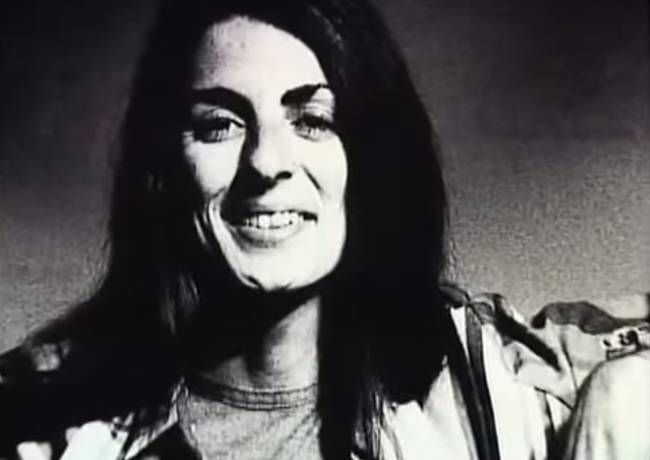Christine Chubbuck was a television journalist whose life and untimely death have become one of the most solemn moments in American media history. On July 15, 1974, while presenting her live morning show Suncoast Digest on WXLT-TV (now WWSB) in Sarasota, Florida, she died by suicide on air—a tragic event that later raised nationwide conversations about mental health, media ethics, and support for journalists.

Early Life and Career
Born in Hudson, Ohio, Christine Chubbuck was known for her dedication to journalism and community affairs. A graduate of Boston University with a degree in broadcasting, Chubbuck worked at several small stations before joining WXLT-TV in 1973. She hosted Suncoast Digest, a 30-minute community affairs program that highlighted local events and interviews with civic leaders.
According to archived reports from the Washington Post (1974) and People magazine (2016), Chubbuck took great pride in her work. She often researched, produced, and presented segments largely on her own, managing the show’s editorial content with minimal resources.

The Incident on July 15, 1974
During what began as a routine broadcast, Chubbuck delivered several news items before experiencing a technical issue that disrupted a segment. Following this, she made a final statement and then took her own life during the live broadcast. The show was immediately cut off, and emergency personnel responded. She was transported to Sarasota Memorial Hospital and passed away the following day.
Eyewitness accounts from station personnel and contemporaneous news reports confirmed that Chubbuck had brought a revolver to the station and had informed very few, if any, people of her intentions beforehand. Her script—reportedly written in the third person—was found at the news desk and included language describing her medical condition and hospitalization.

Mental Health History
Reports from family members and co-workers noted that Chubbuck had struggled with depression, which had been diagnosed by a medical professional prior to her death. According to the Washington Post and People, she had been seeking treatment in the months leading up to the incident. Mental health diagnoses and treatments in the 1970s were still evolving, and many of the approaches used at the time have since been reassessed and improved.
Her brother, Greg Chubbuck, shared in later interviews that Christine had experienced emotional difficulties from a young age. Though there has been retrospective discussion about potential bipolar disorder, no official medical records from that time confirm this diagnosis. It is important to acknowledge that discussions about mental health should be based on clinical evaluations and avoid speculative interpretation.

Legacy and Cultural Impact
The circumstances of Chubbuck’s death have remained a point of media reflection for decades. While her passing was covered in major publications at the time, including The New York Times and Time Magazine, its handling by the media later prompted ethical debates about the boundaries of journalism and on-air content.
Chubbuck’s story is also believed to have partially influenced fictional portrayals of media sensationalism, including the 1976 film Network. However, it is important to clarify that Network is not a direct adaptation of her story, and the film’s creators have not officially confirmed any direct connection.
In 2016, two independent films were released exploring aspects of her life: Christine, a narrative film starring Rebecca Hall, and Kate Plays Christine, a documentary-style film examining the challenges of portraying such a complex subject. Both films received critical attention and reignited public interest in discussions about mental health and journalism.
Chubbuck’s family, including her brother Greg, has expressed mixed feelings about these portrayals. In public statements, he emphasized the importance of focusing on Christine’s life, her professionalism, and her struggles—not just the moment of her death.

Mental Health in Journalism
Christine Chubbuck’s story underscores the ongoing importance of mental health awareness, especially in high-stress professions such as broadcast journalism. According to the American Psychiatric Association, mental health conditions affect nearly one in five U.S. adults each year, and early intervention remains critical.
The journalism profession is known for long hours, deadline pressure, and emotional exposure to challenging events, all of which can contribute to stress and mental strain. Organizations such as the Committee to Protect Journalists and the Dart Center for Journalism and Trauma advocate for better support systems and wellness initiatives within newsrooms.

Encouraging Responsible Media Practices
Today, most media outlets follow strict guidelines regarding the coverage of suicide. The World Health Organization and leading mental health organizations such as the American Foundation for Suicide Prevention (AFSP) recommend avoiding explicit details, sensationalist language, or repetition of graphic content. These guidelines aim to reduce the risk of copycat incidents and to promote helpful, empathetic coverage of mental health issues.

Support and Resources
If you or someone you know is struggling with depression, anxiety, or thoughts of self-harm, professional help is available. In the United States, the National Suicide Prevention Lifeline is accessible by dialing 988, offering confidential, 24/7 support. Worldwide, similar services are available through national and regional mental health organizations.
![Christine (2016) – [FILMGRAB]](https://film-grab.com/wp-content/uploads/photo-gallery/Christine_030.jpg?bwg=1569588770)
Remembering Christine Chubbuck
Christine Chubbuck’s life was defined by more than the way it ended. She was a passionate journalist who cared deeply about her work and community. Her story remains a solemn reminder of the importance of mental health, empathy, and responsible storytelling in the media.
Rather than focusing solely on the tragedy, it is essential to honor her dedication to journalism and use her story to foster greater awareness and understanding. In the decades since her passing, mental health advocacy has grown substantially, with more resources now available for individuals in crisis and a greater commitment within the media industry to compassionate coverage.
Sources:
The Washington Post (1974, 2016)
People Magazine (2016)
National Institute of Mental Health (NIMH)
American Foundation for Suicide Prevention (AFSP)
World Health Organization (WHO)
Congressional Research Service archives

